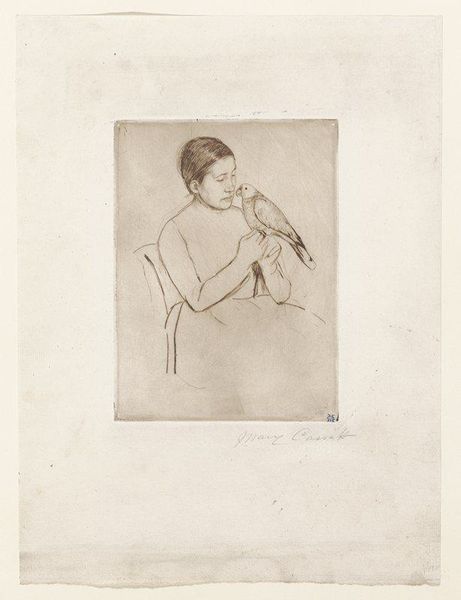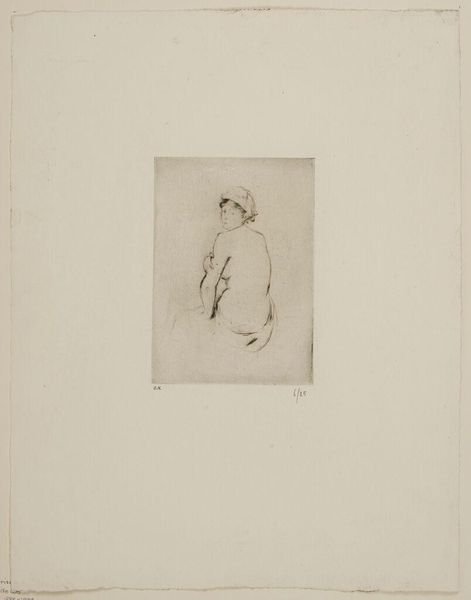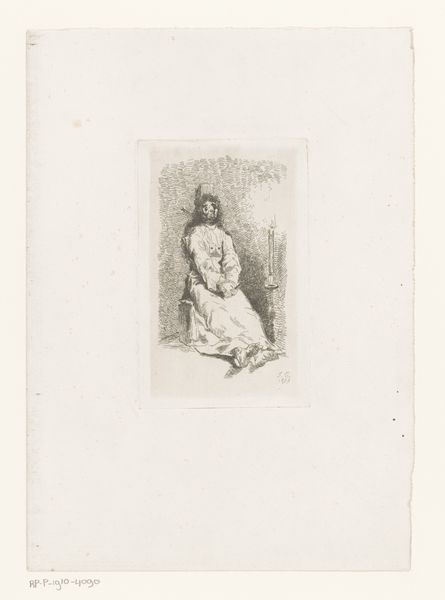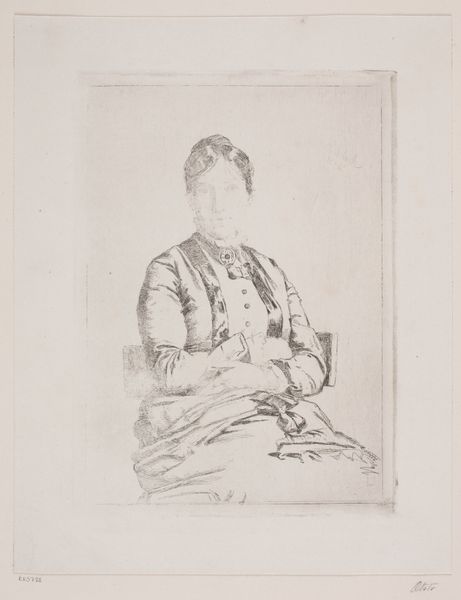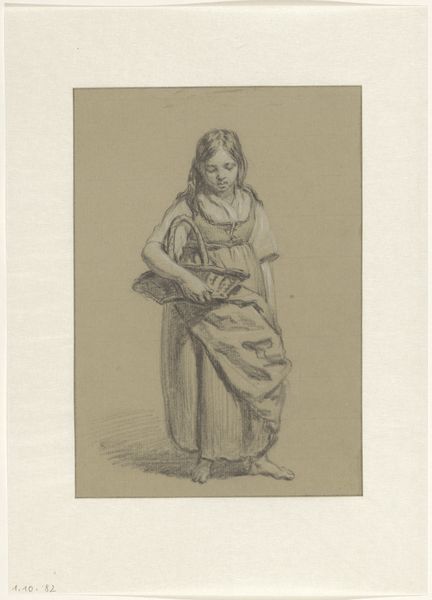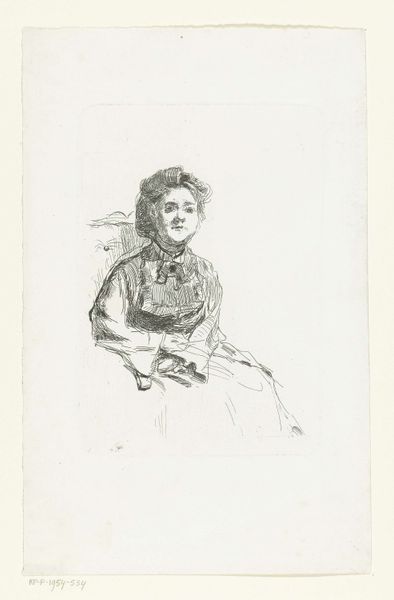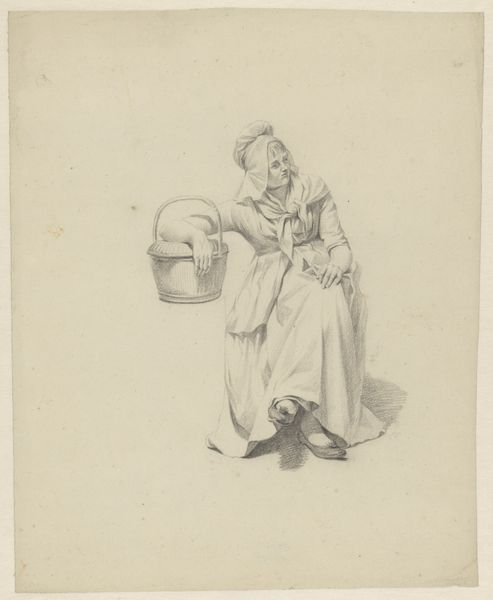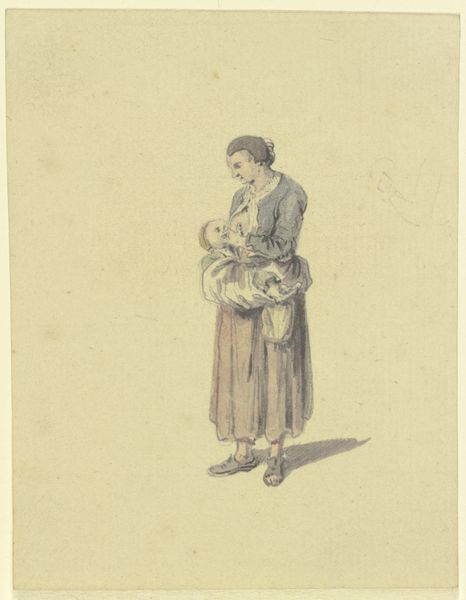
Dimensions: 159 × 119 mm (image/plate); 315 × 239 mm (sheet)
Copyright: Public Domain
Curator: "The Parrot," created in 1891 by Mary Cassatt, presents us with a seemingly simple scene. This drawing, an etching and aquatint printed in color on paper, depicts a young woman holding a parrot. Editor: Immediately, the subdued tonality strikes me. It feels quiet, introspective even. The textures created through the etching process give the image a soft, almost dreamlike quality. Curator: Yes, the softness lends itself well to Cassatt's favored themes of domestic intimacy. Parrots often symbolize mimicry or ostentation, but here the bird appears as a confidante. Historically, birds in art have carried the weight of conveying messages of hope, peace, or even the soul's journey, linking this image to broader ideas. Editor: That's an interesting perspective. Formally, observe how Cassatt positions the parrot and the woman – their heads tilted toward one another creating this closed compositional loop. Notice too how the diagonal lines created by the bird's wing contrasts with the straight vertical of the woman's figure; how the textures differ with the bird rendered with featherlike marks against the linear depiction of the clothing, these stylistic tensions, keep our eye circling through the entire frame. Curator: Consider how the printmaking medium itself lends to a layered symbolic interpretation. Prints allow for reproduction, making art more accessible. In Cassatt's hands, it could suggest ideas around the multiplication of intimacy, the sharing of affection. The muted colors she uses could be a statement on social restrictions or the subdued role of women. Editor: The limited palette undeniably guides us. The nuances within those restrained earth tones speak volumes. She builds dimension and captures light effectively, all through value modulation; it really displays a refined grasp of the technique. Curator: Indeed, it's not just an image of a woman and a bird. It’s a quiet reflection on connection, subtly intertwined social undercurrents of the period in which Cassatt was working. Editor: I find myself noticing how such quiet and subdued formalism can be surprisingly and exceptionally emotive.
Comments
No comments
Be the first to comment and join the conversation on the ultimate creative platform.
